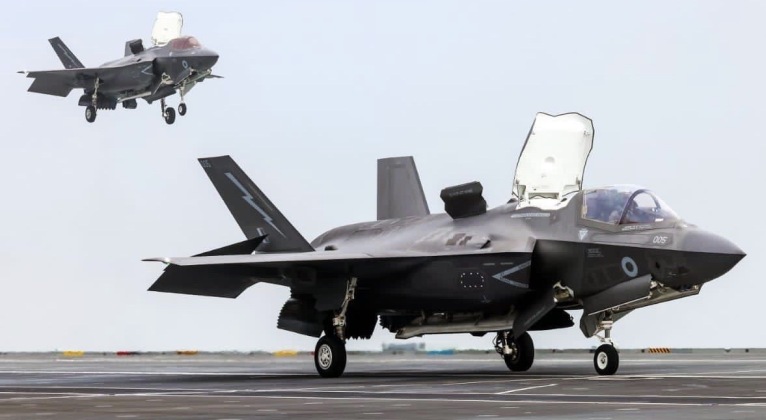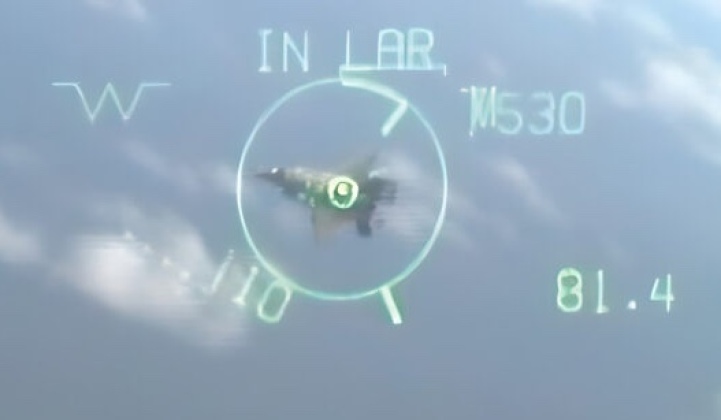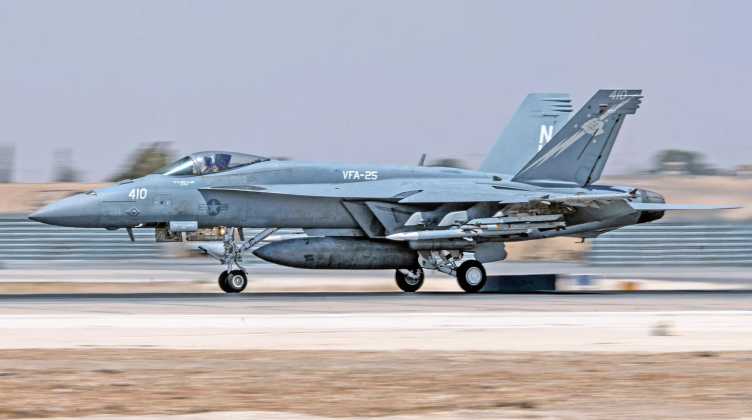News
U.S. Navy F-18E Just ‘Shot Down’ a British F-35B in Simulated Combat: How Did the Super Hornet Win?
A new footage has shown an U.S. Navy F-18E Super Hornet fighter appearing to score a simulated gun kill in an engagement with a British F-35B, as part of Dissimilar Air Combat Training during joint exercises between the two countries. The F-35B was operating from the aircraft carrier HMS Prince of Wales in the Pacific, after the warship was deployed there as part of Operation Highmast to test the British Royal Navy’s ability to project power and sustain a carrier strike group in the far abroad. The engagement gained particular attention due to the technological discrepancy between the two aircraft, with the F-35 being by far the Western world’s most advanced fighter type, while the F-18E is a much older fourth generation design. The F-18E’s secured kill has drawn attention to both the shortcomings of the F-35 in visual range engagements, and to the strengths of the Super Hornet particularly as newer Block 3 variants have been brought into service.

Although the F-35 was designed with a strong focus on beyond visual range combat capabilities, its combination of an advanced infrared search and tracking system, distributed aperture systems, and the high off boresight targeting capabilities provided by its AIM-9X infrared guided missiles, make it highly formidable in visual range engagements. Nevertheless, it is hindered by one major shortcoming, namely that unlike the other fighters of its generation the F-22, Chinese J-20 and J-35, and Russian Su-57, it cannot accommodate its AIM-9X or an equivalent missile in its internal weapons bays, and thus cannot carry them when configured for stealth. On the large majority of missions, therefore, the F-35 will be unable to engage targets within visual unless it points its nose at them, placing the fighter at a tremendous disadvantage against even late Soviet era fighters such as the MiG-29A, and moreso against fighters like the F-18E/F with more modern off boresight targeting capabilities.

While all variants of the F-35 suffer from an inability to carry visual range air-to-air missiles when stealth configured, the F-35B’s visual range capabilities are particularly poor. The F-35B is the most costly variant of the fighter, and was developed to be capable of short takeoffs and vertical landings from makeshift airfields, or from aircraft carriers which lack arresting gear such as the British Queen Elizabeth class ships. These capabilities come at a price, however, including a lower weapons payload, shorter range, and significantly reduced manoeuvrability, with the aircraft able to manoeuvre to only 7g, where 9-10g is the norm for all post-1970s fighter types. This limitation means that even if the fighter were to engage an F-18E/F without the Super Hornet using its missile advantage, the U.S. Navy fighter would have had a significantly greater ability to achieve gun kills.

The F-18E Block 3 is considered second only to the F-15SA/QA/EX among Western fourth generation fighters in its capabilities, and while consistently losing tenders to the F-35, it has been ranked over European competitors such as the Eurofighter and Rafale when evaluated by potential clients such as the Finnish Defence Ministry. Serious delays developing its successor the fifth generation F-35C, followed by even greater delays bringing the F-35 to a fully operational capability, led the U.S. Navy to procure a very large number of F-18E/Fs, with over 30 squadrons currently operational in the service. The fighter was popular with the Navy after the Soviet Union’s disintegration for its relatively low operational costs and maintenance needs compared to the larger and longer ranged aircraft it replaced, particularly compared to the service’s top air superiority fighter the F-14 and the cancelled A-12 radar evading attack jet. The aircraft gained significant attention from late 2024 to early 2025, after three were lost during engagements with Yemeni Ansurullah Coalition forces, including two in little over a week from April-May. The future of the fleet currently remains in question, as the F/A-XX sixth generation fighter currently under development to replace it has seen its funding cut and may face further delays in development.












